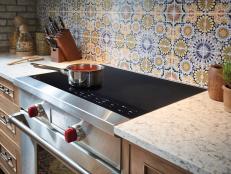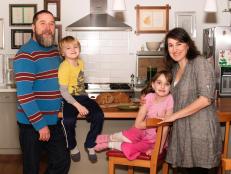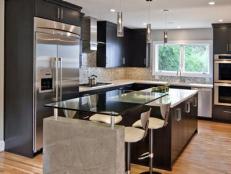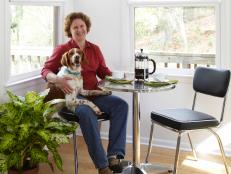Eco-Friendly Kitchens
There's no need to sacrifice style or comfort when creating a kitchen that improves a home's indoor air quality (IAQ), energy efficiency and water use. Here's a look at the improvements that have made chic, eco-friendly kitchens possible:
IAQ Improvements
Indoor air pollution can be five times higher than outdoor air pollution. As much as 40 percent of the population experiences one or more symptoms of poor IAQ, including asthma, allergies and respiratory infections. IAQ is significantly affected by volatile organic compounds (VOCs) present in many common construction materials. Kitchens traditionally have been filled with materials high in VOCs—cabinets made from particleboard that contains formaldehyde, paint that contains VOCs such as benzene, ethylene glycol, vinyl chloride and mercury, floors that contain toxic adhesives, binders and sealants. Instead using the following “green” products, which off-gas little or no VOCs, can improve IAQ and homeowner health:
- Low-VOC cabinets. One option is agricultural fiber panels, such as wheat board and strawboard, which are made from plant stems and sustainable binders. These cabinets have no VOC emissions and are a good choice for areas that won't get wet. A more traditional cabinet material, solid wood, is now available in low-VOC-emissions varieties. And cabinets made with particleboard or fiberboard can be sealed with low-VOC paint or stain or laminated to prevent harmful off-gassing.
- Low-VOC paints. New manufacturing techniques have led to the development of paints that release no or minimal VOC pollutants and are practically odor-free. They are high-quality latex-based paints that are equal to or better than conventional oil-based formulas in terms of quality and durability. Latex paints use water as their solvent and carrier, enabling easier cleanup and leading to lower toxicity than oil-based paints have. Note that not all latex-based paints are low in VOCs and that some oil-based paints qualify as low-VOC because their original formulas have been modified. Check the manufacturer's specifications for verification.
- Natural and recycled flooring. Many green flooring options with low or no VOCs are available and suitable for kitchen use, including bamboo, cork, recycled carpet tiles, reclaimed wood and terrazzo tile.
Energy- and Water-Use Improvements
Kitchen appliances that are used frequently consume a lot of energy and water—refrigerators, dishwashers, ranges, lighting, faucets. Using energy-efficient appliances such as those with the Energy Star label can cut electricity use by 15 percent, and using low-flow faucets in the kitchen can save 22,000 gallons of water annually. (That savings estimate is based on replacing a 3.5-gallons-per-minute faucet with a 1.5 GPM faucet that's used an average of 30 minutes a day.)
The easiest way to save energy and water in a kitchen is to install Energy Star-rated appliances. Energy Star products meet strict energy-efficiency guidelines set by the U.S. Environmental Protection Agency and the U.S. Department of Energy (DOE). Here's a look at their advantages:
- Energy Star dishwashers. These dishwashers use at least 41 percent less energy than the federal minimum standard for energy consumption, and they use much less water than conventional models.
- Energy Star refrigerators. These refrigerators use at least 15 percent less energy than required by current federal standards, 40 percent less energy than conventional models sold in 2001 and about 50 percent less energy than models manufactured before 1993. Similarly, Energy Star freezers use at least 10 percent less energy than required by current federal standards.
- Energy Star lighting. This lighting uses about 75 percent less energy than standard lighting, produces 75 percent less heat and lasts up to 10 times longer. Kitchen ceiling lights are one of the five most-used light fixtures in a home (along with table and floor lamps in the living and family rooms and outdoor porch and post lamps.) According to the DOE, if every American home replaced the five most frequently used light fixtures or the bulbs in them with Energy Star-rated products, U.S. consumers would save close to $8 billion a year in energy costs and prevent production of greenhouse gases equivalent to the emissions from nearly 10 million cars.
- Magnetic-induction cooking. Magnetic-induction cooking uses electricity to produce a magnetic field that causes friction and heat in metal cookware. With this cooking method, the pot, not the cooktop, is essentially doing the work. Magnetic-induction cooktops look similar to flat electric cooktops. The main benefit of cooking with magnetic induction is that cooking can be accomplished faster, with more precision and less energy consumption. For example, cooking with magnetic induction is 90 percent efficient, compared with cooking with resistance electric, which is about 65 percent efficient, and open-flame gas, which is just 55 percent efficient.












































